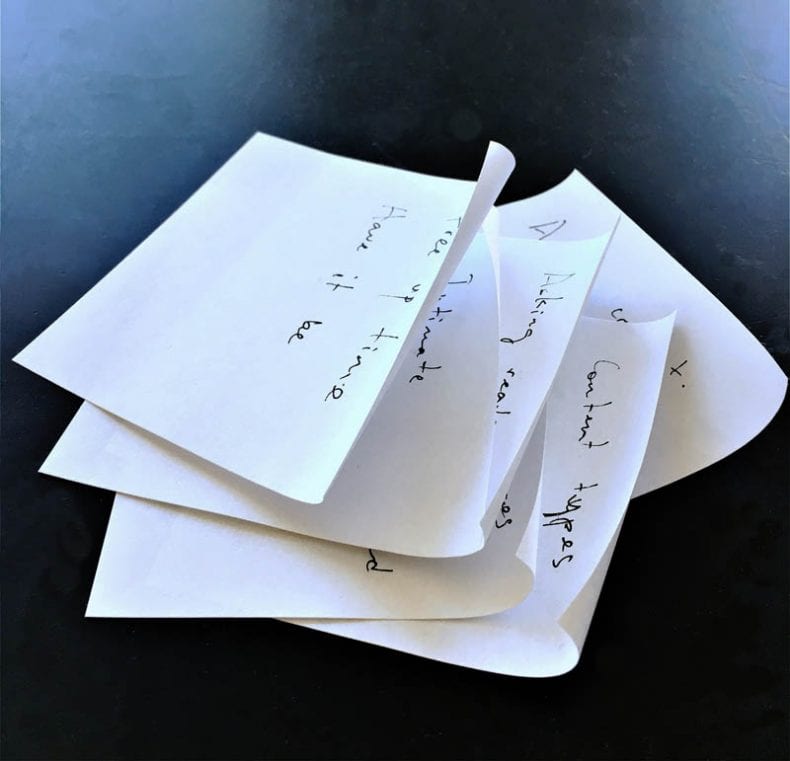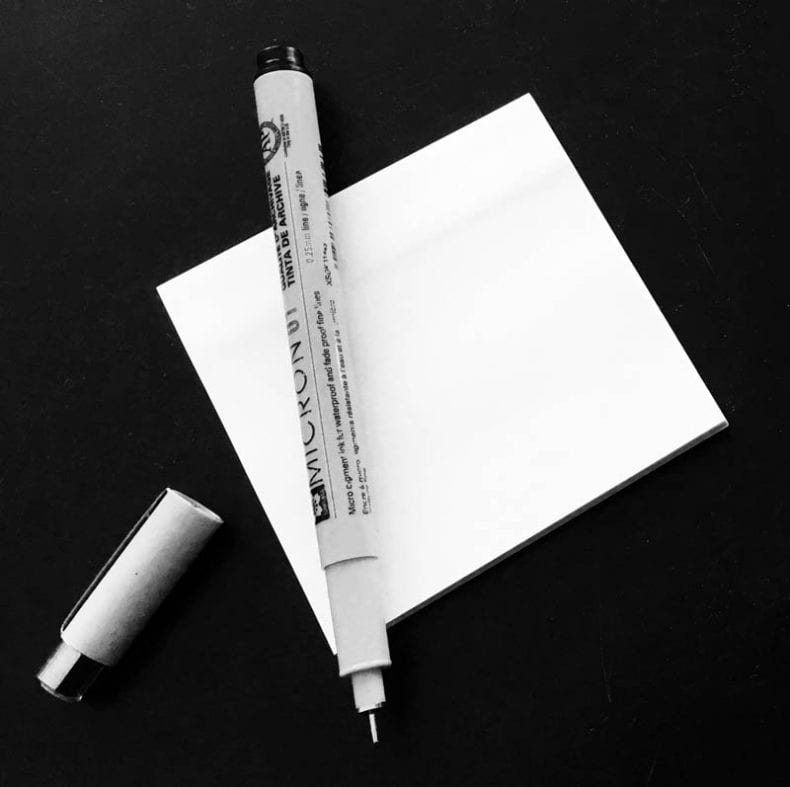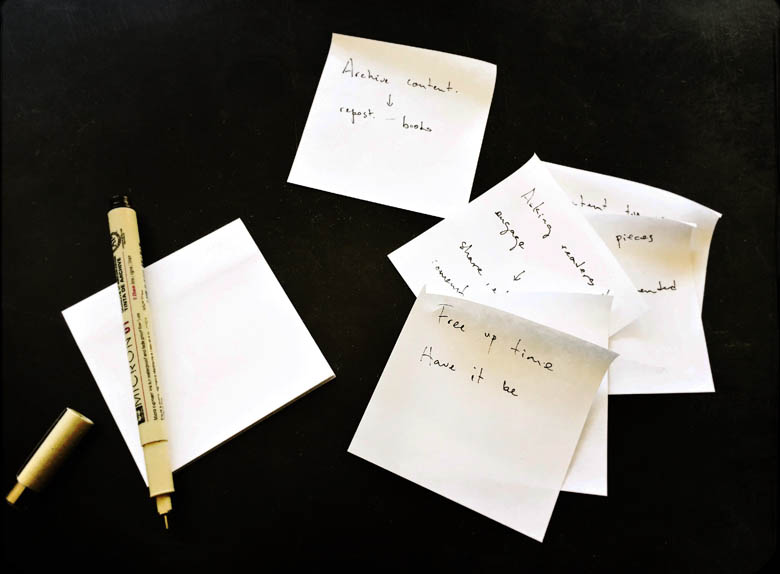When I met recently with Design Technologist* Joe Fraga, he employed an interesting note-taking process I’d never seen before. As we talked, Joe made notes on sticky notes, NOT in a notebook or on a pad.
Notebooks keep ideas and questions stuck amidst too many others. Post-its can be arranged and rearranged, Kanban style, he said, referring to the clever analog method of visualizing a problem and defining possibilities and actionable tasks without getting overwhelmed (I wrote about it here along with the digital version I employ daily).

At the end of our meeting, Joe carefully placed the stack of notes in his pocket to refer to later.
A few days later, he emailed a photo of his process working on the various ideas we’d discussed.
Each sticky note holds one idea; he’d added additional notes while working with them. The notes can be organized and re-arranged as needed. Brilliant!

Although I’ve long been in love with post-its for capturing on-the-fly ideas, I didn’t take them to the next level: putting them in a organizational framework so I could see how they fit into the bigger scheme and/or develop ways to implement them. I’d either transfer them to other files or let them float around. Joe’s method has already changed that.
Plain white 3 x 3-inch post-its have long been my favorite sticky note, providing a “clear space” without lines or colors to distract or confuse. Four hundred and fifty of them — 5 packs — cost about $8, or less than 2 cents each. (I was thrilled to discover small 1.5 x 2-inch sticky notes, long unavailable until recently!) Joe says he often uses colored sticky notes for color-coded processes.


*The best definition of a Design Technologist I’ve found is an interaction designer, a coder, a visual designer, an information architect all rolled together (via Medium.)





Sally, are you familiar with the English writer and television personality named Will Self? He is an obsessive post-it note writer, collector and displayer — a critical part of his working process. There are photographs documenting his work space that you can see via a quick Google image search, although the best ones — showing how he organizes the (only yellow) post-it notes both vertically and in journals — are in a book I show my students. In it, he explains his methodology and the psychological motivations that influenced it.